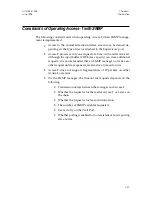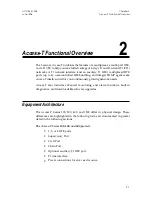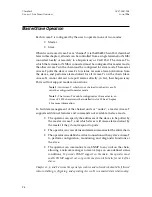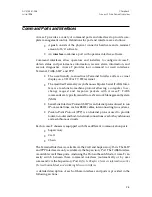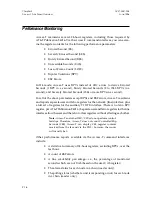
Master/Slave Operation
Each Access-T is configured by the user to operate in one of two modes:
•
Master.
•
Slave.
When two or more Access-Ts are “chained” (via the RS485 Chain Port, described
later in this chapter), all units can be controlled from a single terminal (or NMS)
connected locally or remotely to a Supervisory or Craft Port. The Access-T to
which the terminal or NMS is connected must be configured for master mode;
the other Access-Ts in the chain must be configured for slave mode. The master
Access-T polls the slave Access-Ts for status, receives alarm notification from
the slaves, and performs alarm dialout for all Access-Ts on the chain. Slave
Access-Ts cannot dial out to report alarms directly; in fact, their Supervisory
Ports will not support modem connections.
Note 1:
An Access-T which is not chained to other Access-Ts
must be configured to master mode.
Note 2:
The Access-T module configured as the master in an
Access-T 1500 chassis must be installed in slot 15. See Chapter
3 for more information.
To facilitate management of the chained units or “nodes”, a master Access-T
supports additional features and commands not available in slave mode.
•
The operator can specify the addresses of the slaves to be polled by
the master Access-T, and which slaves will cause alarm dialout by
the master if they do not respond to polls.
•
The operator can view status and alarm summaries for the entire chain.
•
The operator can establish a virtual connection with any slave Access-T
to perform configuration, monitoring, and diagnostic functions at
the slave.
•
The operator can communicate via SNMP to any unit on the chain,
allowing a network manager to receive traps on user-defined status
conditions. To provide SNMP support on the chain, the operator must
enable SNMP support not only on the master unit but also for each of the
slaves.
Chapters 3, 6, and 8 discuss the special procedures and rules which should be followed
when installing, configuring, and operating Access-Ts in a master/slave relationship.
Chapter 2
ACST-0351-005
Access-T Functional Overview
June 1996
2-4











